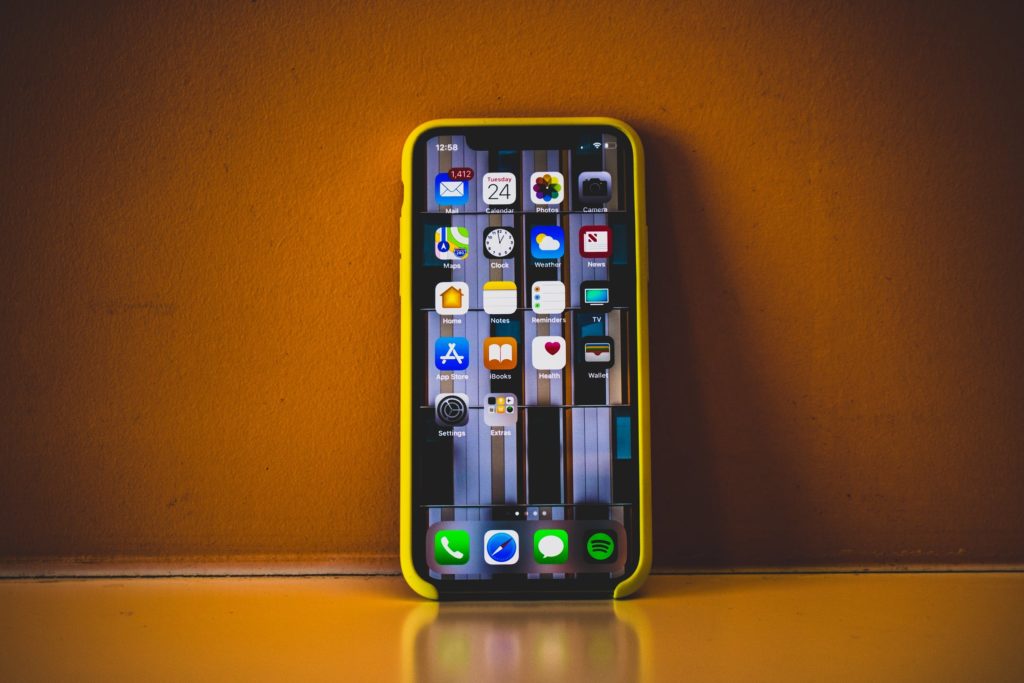 I know I’m guilty. I see my phone light up or hear a buzz, and in an instant, I’m pulled out of whatever I am doing, no matter how deep into the task I may be. Distractions are all around us and avoiding them is next to impossible. After all, that phone buzz might be something trivial like an Instagram notification, or it could be an email from a professor with vital information about an assignment—I might as well check to be sure. And just like that, I’m lost in all the notifications and Buzzfeed quizzes that come my way. Without even knowing it, an entire hour can be wasted.
I know I’m guilty. I see my phone light up or hear a buzz, and in an instant, I’m pulled out of whatever I am doing, no matter how deep into the task I may be. Distractions are all around us and avoiding them is next to impossible. After all, that phone buzz might be something trivial like an Instagram notification, or it could be an email from a professor with vital information about an assignment—I might as well check to be sure. And just like that, I’m lost in all the notifications and Buzzfeed quizzes that come my way. Without even knowing it, an entire hour can be wasted.
I know I’m not alone, as has been confirmed by several surveys [1, 2, 3]. One study found as many as 97% of students found themselves distracted by their phones or other forms of technology [2].
Even though there seem to be several detrimental aspects to technology, it is simply not feasible that we entirely do away with technology. We seem to be faced with a double-edged sword. On one hand, our entire culture is entirely enmeshed with technology, with the academic sector seeming to be some of the deepest involved [4]. Because our educational system is so deeply involved with technology to the point of dependence, doing away with technology is simply not a practical goal. Since we as students and budding professionals are required to be electronically connected, how can we make sure that we are focused on the task at hand, rather than the latest tweet?
The first tip to ensure that you are staying on task is to keep your goals in mind [5]. A good way to do this is to lay out a “to-do” list and prioritize what needs to be done first [6]. This allows for a second, yet integrally intertwined, tip—focus on only a few most important goals, rather than an entire list [5]. This allows you to keep a visual reminder of your task in front of you, as a sort of prompt to stay on topic. Keeping the list close also allows you to write down things you might be worried you will forget if you don’t attend to them right away. You are then able to stay on task better as you won’t need to run off on the occasional rabbit trail until one task is entirely accomplished [5].
 By keeping fewer and the most important goals in mind, you are actually allowing yourself better focus [5]. Studies have shown that human working memory, the part of your mind that holds the tasks at hand, can only hold a maximum of about 3-5 items, give or take two items [7]. Because our minds can only hold such a finite number of meaningful trains of thought or tasks, it is important to be judicious about these slots [7]. As mentioned before, this gives you more working memory to devote to the task at hand, rather than the infinite number of other things vying for our attention [7].
By keeping fewer and the most important goals in mind, you are actually allowing yourself better focus [5]. Studies have shown that human working memory, the part of your mind that holds the tasks at hand, can only hold a maximum of about 3-5 items, give or take two items [7]. Because our minds can only hold such a finite number of meaningful trains of thought or tasks, it is important to be judicious about these slots [7]. As mentioned before, this gives you more working memory to devote to the task at hand, rather than the infinite number of other things vying for our attention [7].
Even with meticulously prioritized to-do lists, the temptation of social media still calls out. No matter how intently you intend on focusing, you are still human—breaks are required. This leads into the next tip: set predetermined breaks for yourself [8]. Our friends in behavioral science have helped to demonstrate that when we have a reward set out for us, we are more likely to keep working hard for that reward [9]. Moreover, you might be less tempted by that Facebook notification if you know that you will get to check on it in the next 50 minutes [8].
Another benefit of the pre-planned study break is the ability to return to your work refreshed and ready to go [10]. However, one article notes that only social media or internet-based breaks may not be enough to allow you to return to your studies energized [8]. Instead, the authors suggest more physically engaging activities, such as taking a walk outside (not just a couple laps around the library), organizing the stuff piling up around you, taking a shower, or even just chatting with a friend about something unrelated [8]. All of these options allow you a short reprieve from the studying that lies ahead and allows you to escape the computer screen for a bit [8].
Even with a study break and the most organized list possible, I will find that my mind wanders onto other things. Controlling “internal distractions” is also necessary to make the most of your study time [5]. These internal distractions can be defined as any internal stimuli (like thoughts, memories, or even conflicts) that act as diversions or aberrations from the task at hand [10]. These internal distractions can be taken care of through a variety of ways. The list to leave any pressing thoughts that pop up, sometimes referred to as a “parking lot”, is one way that you may already be employing [11]. Perhaps in order to manage these internal distractions, you need to have something to drown out your own thoughts—like background noise or music (both Spotify and YouTube have excellent playlists of focusing music) [12]. Offering strategies on how to handle these internal stimuli is even more subjective than these other general focus tips. In order to find what will work the best for you in terms of controlling internal distractions [12], you may need to spend some time consciously getting to know yourself and your study habits first.
Sometimes outside of regulating ourselves, we still need an external supervisor. Thankfully, some application developers have us in mind [11]. There have been several (free!) apps and extensions developed to help people like me (and a good proportion of the population) study more effectively by removing the temptations of social media [11]. These applications and extensions typically work in similar ways; by disabling access to whatever websites that you need “taken away” so that you can work [11]. Macintosh users can try the app “SelfControl” [11], and people using Google Chrome can also install the extensions “StayFocusd” or “I-Am-Studying” [11].
The demands on students seem to be greater now than they have been before, simply because we are living in the age of information. The need to be connected is ubiquitous. However, the same method through which we access so much information can also serve as a massive distraction. Implementing these focusing strategies can help you take more advantage of all of the data at your disposal while better blocking out the digital distractions!
Now, that’s enough time perusing a blog—get back to studying!

